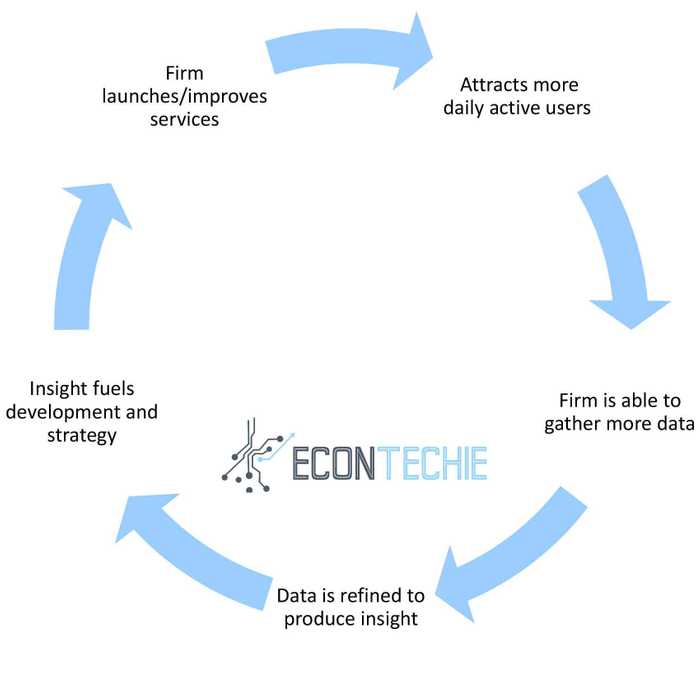Understanding Digital Services - The Value of Curation
A few months ago, I wrote about Apple’s services focused growth strategy. I expressed a number of concerns. One is the potential cultural damage this shift could cause and the other, the long term viability of privacy-focused services strategy; as it lacks the ability to capture valuable user data. After taking some time to digest Apple’s latest (March 2019) keynote, I am far less concerned. Mainly due to a key aspect that I feel that I and many others missed, the importance of curation.
Data is capital
I am a big believer in the value of data. Data is much more than a byproduct of the implementation of a product or a service. At scale, data provides an organisation with a valuable currency to better understand their customers. Successful organisations repeatedly leverage the data they have gathered to launch or tailor products, spot gaps in the market and improve retention.
The currency metaphor is extended by the way in which the accumulation of data allows a firm to drive growth. This is the same way capital enables firms to grow at faster rates. As I wrote in a previous article, specifically about services:
The gathering of data affords an organisation a cyclic advantage. Wherein more data provides the ability to improve their services, this generates more active use, which results in more data and so on and so forth.
This is why data is so important, it gives firms the ability to spiral into market dominance. It is also why I was doubtful that Apple could effectively compete in services if they continued to deliberately avoid gathering customer data.
Customer first services
In the weeks leading up to Apple’s event, I was expecting a softening of their stance on privacy which would represent a cultural shift to be more services focused. This was the exact opposite of what actually happened. During the presentation, Apple doubled down on its approach to privacy. On multiple occasions, they showed the following slide. Which functioned as a clear message of commitment to their customers.
 This view was cemented in the closing moments of the presentation where Tim Cook remarked.
This view was cemented in the closing moments of the presentation where Tim Cook remarked.
From everything we’ve shared with you, you can see how important these services are for us and for all the ways they extend the experiences of our customers even further. They entertain, inspire, inform, and enrich our lives. Because at Apple, the customer is, and always will be, at the centre of everything that we do.
Tim Cook made it clear that Apple still views itself as a customer-focused company with privacy being a cornerstone of this vision. The move to services is unashamedly a move to acquire more revenue, but it is not a sacrifice to their core principles.
Modelling data value in consumer services
To me, the cumulative value extracted from data looked insurmountable. In the short term Apple’s services may keep up but in the long run, I was struggling to see how Apple could compete. Yet when listening to the keynote, I found their propositions surprisingly compelling. This forced me to revisit my previous assumptions. I decided to visualise the way in which data feeds into the value chain by breaking down each step.
This model highlights the cyclical nature of data I discussed earlier. Breaking down each step:
- A firm launches/improves a service that has the ability to gather user data.
- The service is able to attract users.
- These users generate data.
- Data is “refined” (combined with other data sources, analysed, etc.) to produce actionable insights - data-driven views that can provide real improvements to customer experiences.
- Insight is fed into the organisation to guide strategy and service development.
- Cycle repeats.
The model shows that the data value chain is bottlenecked by a firms ability to refine this data into insight and feed that insight into development and strategy. The effectiveness of this cycle is further constrained by a firms attitude to risk and iteration.
In other words, gathering heaps of data does not necessarily lead to insight and this insight does not guarantee product improvement. Data needs to have a pathway to travel throughout the organisation. This can be broken down into two distinct parts. The first of which, is analysing data and producing insight and the second step, is actioning this insight by using the results of your actions to inform future decisions.
To give an example, an organisation that has all of the customer data but incorrectly analyses the data will not be able to realise the benefits. Similarly, if an organisation does not have a culture of experimentation and iteration they will not be able to effectively turn the insights into better experiences.
The key takeaway is that simply gathering data is not enough, a strong cultural infrastructure is also required to reap the rewards. I am coining the phrase cultural infrastructure to describe the environment needed to allow data to proliferate through an organisation 1. For an organisation like Apple who is not committed to relentless A/B testing and likes to work on holistic solutions; data was never going to offer the same advantages as it does to its competitors. Even if they bought data from other sources there is no guarantee that the data you gather will lead to insights 2 or that the organisation would effectively utilise it. Apple simply does not have the cultural infrastructure well suited to realise the full benefits from data. A good example of this is in Ken Kocienda’s excellent book creative selection, where he remarks about employees at Google testing 51 shades of blue to help them decide the right colour;
Google factored out taste from its design process. At Apple we never would have dreamed of doing that, and we never staged an A/B test for any of the software on the iPhone. When it came to choosing a colour, we picked one. We used our good taste — and our knowledge of how to make software accessible to people with visual difficulties related to colour perception — and we moved on.
This is where curation and privacy fit in, they are highly differentiated, human-centric approaches to meeting customer demands. I previously believed that their stance on privacy was driving their need to curate but the closer I looked at the value chain, the more I started to understand that both were as a result of culture. Apple does not prioritise the collection of data, because it would not be effective at utilising it. It offer curated feeds, because of its belief that it holds the insight to make the best decisions for customers.
Human curation as Insight
Curation is defined as the process of selecting, organising, and presenting information, typically using professional or expert knowledge.
With the rise of the internet and a move to digital platforms, curated content is on the decline; due to the availability, volume and variety of content. Algorithms have become the default way most of our content is served to us. This bottom-up approach to distribution, has allowed for widely sourced content to be shared to those who are most interested in consuming it.
The sheer amount of content available has led to many people becoming overwhelmed. People want to know that the content that they interact with has been vetted for its quality. They also want to be shown content that they actually enjoy consuming. I want to emphasise the distinction between the content we consume versus content we enjoy consuming because although we spend astonishing amounts of time at the behest of our algorithmic feeds, this time often feels unfulfilling. Terms like “hate-watching” are a result of the content that we regret consuming but we are yet unable to avoid.
Curation is a top down approach to content distribution. Good curation is all about understanding your users. Curated content is selected based on what the editors feel is the best content for a broad range of users. With music services, you want to be assured of a level of quality. With news services you trust that you will receive a selection of balanced news stories all originated from reputable sources.
Curation is complex, it is instinctive, it is human. Decisions while perhaps supported by data are not driven by it. When you open apple’s platforms, you are presented with human curation everywhere. Curation is not new to Apple, it is an area that it has been developing for a long period of time and is one that draws many parallels to their approach to hardware.
Man Versus Machine
Algorithmic feeds are arguably responsible for some of the most pressing problems that we face in today’s society. By utilising the power of machine learning, they recommend content to us with one key objective, to ensure we consume as much of said content as possible.
For the most part, recommendation engines have been a great benefit, directing users to the content they are most likely to consume. These engines have encouraged people to access opportunities that they would otherwise never have seen, such as high-quality educational materials. An unintended (although foreseeable) consequence of these engines is the spread of social phenomena that would otherwise be marginalised, such as hate speech, conspiracies and other disturbing content. To make matters worse, due to the nature of these networks, they are able to detect which users are most likely to be enticed by this content and provide them with the most convincing versions. To further add to this effect, once you have engaged with a particular type of content you become trapped in a filter bubble that restricts you from viewing content that is different or opposed to your views.
There is a growing consensus that recommendation engines, in their current form, are having a detrimental impact on our society. And so far, tech companies have failed to combat these challenges. That’s not to say that these feeds are inherently bad but there is a clear need for balance.
Returning to Apple, I want to draw some focus to a few areas of Apple’s mission statement outlined by Tim Cook in 2009.
We believe in the simple, not the complex.
We believe in deep collaboration and cross-pollination of our groups, which allow us to innovate in a way that others cannot.
We participate only in markets where we can make a significant contribution.
I believe that there is a significant contribution that Apple can make in these markets. With the world awash with algorithmic feeds, curation offers a true release. I previously argued that Apple would struggle to be successful in services. However, success to Apple does not equate to large market shares. Success is creating services that enhance Apple’s customer-focused ecosystem.
All of Apple’s announcements point to a robust strategy. These services all have one thing in common, they are creating an environment that users want to be a part of. In doing so, they are ensuring that your next product will be an Apple one.
By Damilola Payne
-
This would mean a commitment from key stakeholders, sufficient allocation of resources and broad acceptance of risk. I have borrowed this term from geography, where it refers to the ingredients needed to boost tourism.
↩ -
Data from other sources is significantly worse than data gathered yourself. As a principle you want to be as close to data collection as possible, the further removed you are the less valuable it is.
↩


